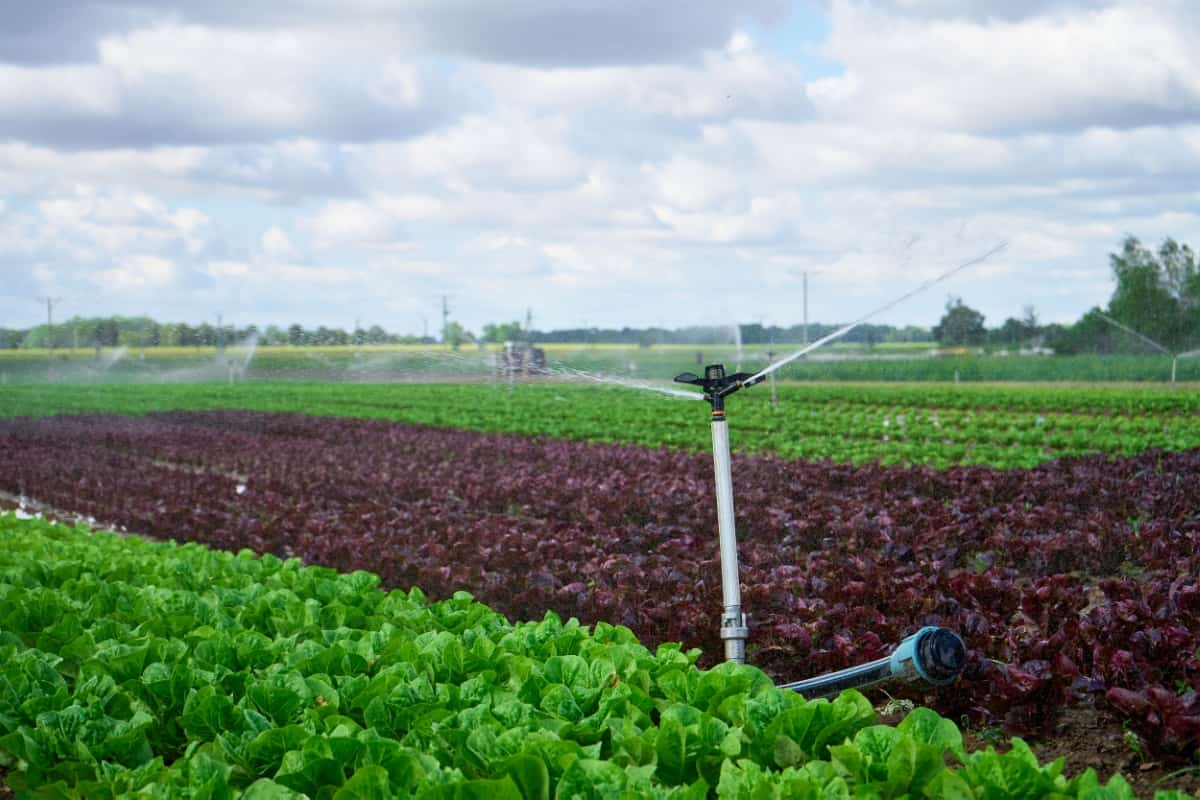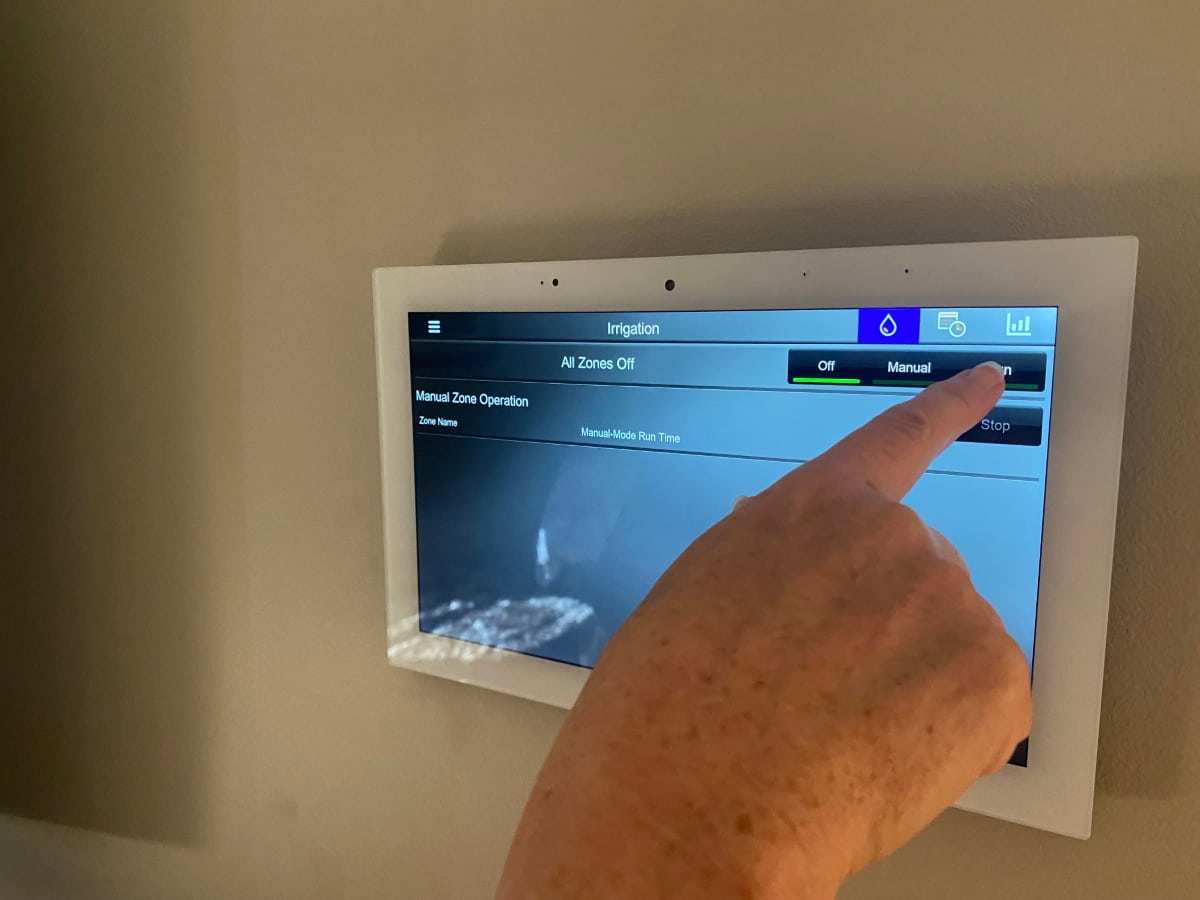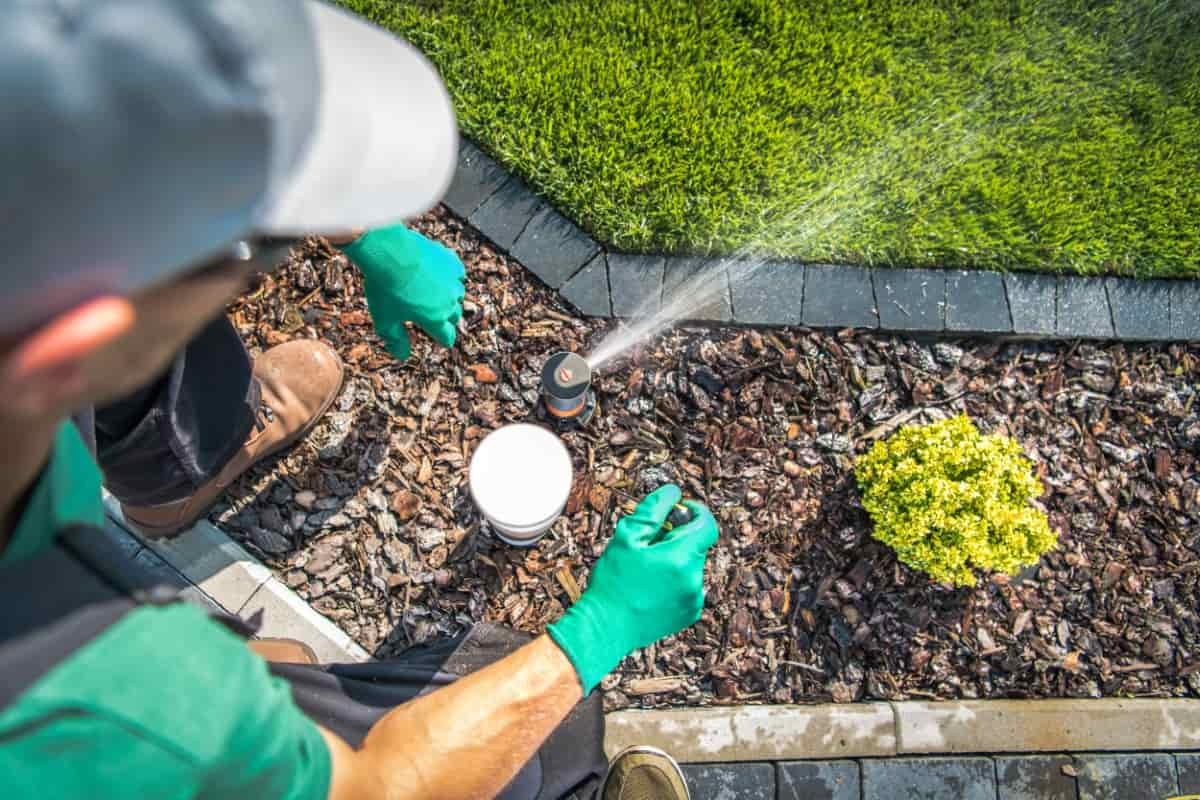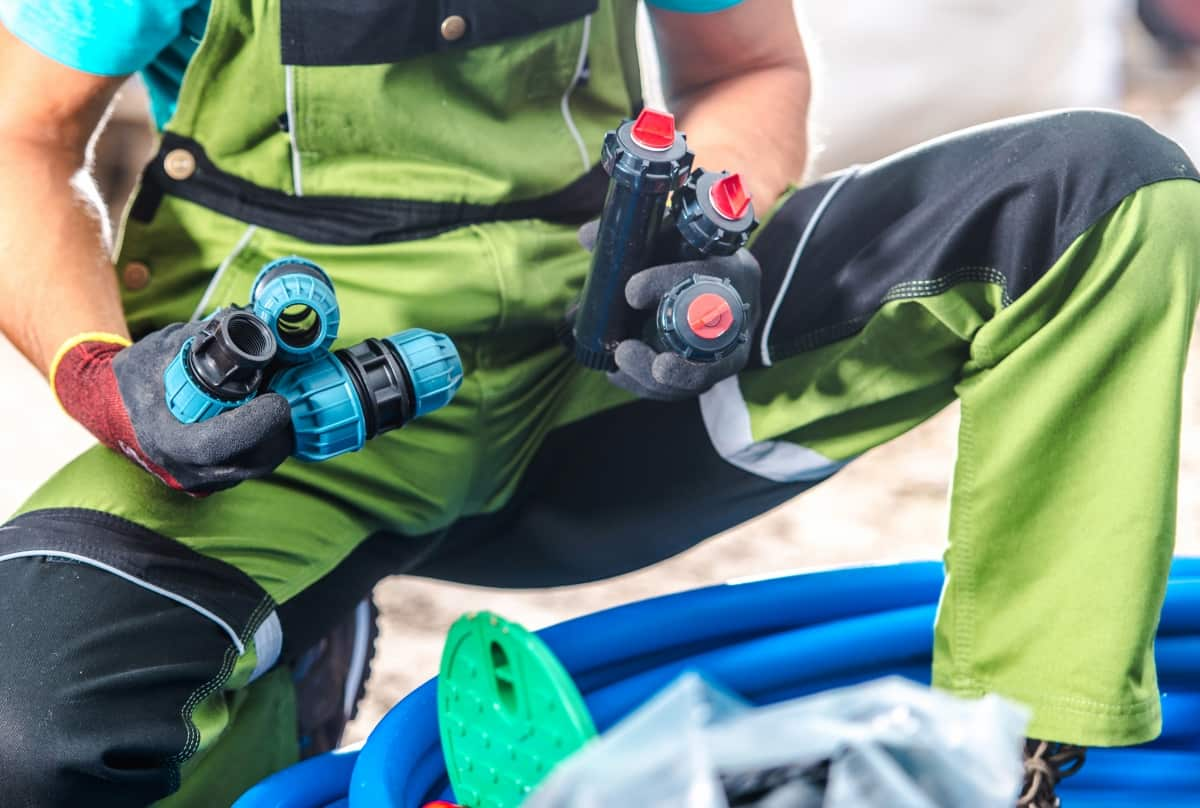When we discuss optimizing a sprinkler system, the importance of zone setting can’t be overstressed. It ensures efficient watering, reduces wastage, and helps maintain your landscape’s health and vigor. By defining specific zones in your garden, you strategically direct water only to where it’s most needed.

How to Set Zones on Your Sprinkler System
Understanding the Importance of Zone Setting in Sprinkler Systems
Often, homeowners ask, “How do you set up a zone for a sprinkler system?” This process involves categorizing areas of your garden based on their watering needs, ensuring that each plant receives just the right amount of water without any excess. This can save you water and money and promote responsible water consumption, especially in regions where this precious resource is scarce.
Assessing Your Landscape’s Watering Needs for Efficient Sprinkler System Zones
Before diving into the technical aspects of sprinkler zones, it’s vital to understand and assess the unique watering needs of your landscape. Different plants have varying water requirements. For example, your lush lawn might need more frequent watering than the shrubs or flower beds. Additionally, areas exposed to direct sunlight will dry out faster than shaded regions.
To effectively answer the question, “How do you set up a zone for a sprinkler system?” begin by closely examining your garden. Identify areas that have similar watering needs and group them. Once you clearly understand these needs, splitting zones or even deciding how to split a zone in an existing sprinkler system becomes a more manageable task.
Step-By-Step Guide: How To Determine the Number of Zones Needed for Your Sprinkler System
Determining the number of zones required is a mix of art and science. Start by listing down all the distinct areas within your garden. This could be based on plant type, sun exposure, soil type, and ground slope. Now, calculate the water flow rate your sprinklers can provide for each area, and then decide how many sprinklers you’ll need.
In case you missed it: Cost Analysis of Sprinkler Irrigation Per Acre: A Comprehensive Study

A single zone should ideally be limited to the number of sprinklers your water flow can support. Next, group areas with similar water requirements together. As you plan, always remember how to split a zone in an existing sprinkler system should you modify your setup.
Factors to Consider when Setting up Sprinkler System Zones
While determining zones, several factors play a pivotal role. Sunlight exposure, as mentioned, is crucial. Areas with more sunlight will evaporate water faster, needing more frequent watering. Soil type is another factor. Sandy soils drain faster than clayey ones, so that they might require more frequent watering.
The slope of the ground can cause water to run off from higher to lower areas, meaning sloping areas might need shorter but more frequent watering cycles. It’s also important to factor in the mature size of the plants since larger plants will have more extensive root systems and may require more water. Also, while setting up or even later, if you ever wonder how to split a zone in an existing sprinkler system, considering these factors can guide the decision.
Mapping out Your Landscape: Designing Zones for Optimal Water Distribution
With all the above information, it’s time to map out your garden. This visual representation will be your guide to setting up the sprinkler system. Start by sketching your landscape layout on paper or using any digital tool you’re comfortable with. Mark areas like the lawn, flower beds, vegetable patches, trees, shrubs, etc.
Based on your previous assessments, start grouping these areas into zones. Each zone should represent areas with similar watering needs. Once this is done, it’ll be easier to answer, “How long should sprinklers run in each zone?” because you’ll have a clearer idea of each zone’s water requirements.
Selecting the Right Sprinkler Heads for Each Zone in Your System
Once zones are mapped out, choosing the right sprinkler heads for each becomes crucial. Different sprinkler heads have varying water dispersion patterns and ranges. Rotary sprinklers might be ideal for lawns because they cover a wide area. For flower beds or vegetable patches, you might consider drip irrigation or soaker hoses that provide water directly to the roots with minimal wastage. The goal is to match the sprinkler head type with each zone’s specific needs. This ensures efficient watering and helps determine how long sprinklers should run in each zone.
In case you missed it: Top 10 Benefits of Sprinkler Irrigation in Horticulture

Adjusting Watering Schedules and Duration for Different Zones
After setting up the zones and installing the right sprinkler heads, the final step is determining the watering schedule. Understanding “How long should sprinklers run in each zone?” becomes crucial. Each zone will require different watering durations and frequencies based on its unique needs. For example, your lawn might need 15-20 minutes of watering every other day, while a vegetable patch requires 10 minutes daily.
Adjusting the watering schedules and durations ensures that every plant gets just the right amount of water, promoting healthy growth and conserving water. Regularly monitoring and adjusting based on seasons and changing landscape needs will ensure your garden remains lush and vibrant all year round.
Fine-Tuning Zone Settings: Dealing with Slopes, Shade, and Other Challenges
Fine-tuning the zone settings of a sprinkler system is vital to overcoming the unique challenges posed by varying garden terrains and conditions. Sloped areas, for instance, can lead to water runoff, often leaving the top areas inadequately watered while drenching the bottom areas.
To address this, consider shorter watering durations but increased frequencies to give the water time to soak in. Shade can result in certain areas retaining moisture longer than sun-exposed sections. It’s important to adjust zone settings so that shaded regions receive less frequent watering, thus avoiding waterlogging and promoting root health.
Troubleshooting Common Issues with Sprinkler System Zones
Despite being designed for efficiency, Sprinkler systems are not devoid of occasional hitches. A zone might not turn on due to electrical issues or valve problems. Uneven watering within a zone can arise from clogged sprinkler heads or incorrect placement. In case of reduced water pressure in a specific zone, look for leaks or breaks in the line. It’s essential to test each zone to ensure it’s functioning optimally periodically. If issues persist or are challenging to diagnose, consulting a professional can provide insights and solutions to ensure each zone operates efficiently.
Regular Maintenance and Monitoring: Ensuring Efficient Watering with Proper Zone Settings
Regular maintenance and monitoring are paramount for a sprinkler system to work efficiently over the years. Start with a seasonal check, ensuring sprinkler heads are free from dirt, debris, or blockages. As plants get bigger, their water needs change, so it’s important to review and change watering settings for them.
In case you missed it: A Comparative Cost Analysis of Drip Irrigation Per Acre

Checking for leaks, evaluating the water pressure, and ensuring the electronic controls function correctly are all crucial steps. With proper zone settings and regular maintenance, you can ensure your garden remains vibrant while using water resourcefully.
Conclusion
A well-set and maintained sprinkler system is indispensable to ensure that a garden thrives while promoting efficient water use. Addressing the unique challenges of each zone, troubleshooting issues promptly, and undertaking regular checks can make a significant difference. With a keen eye and proactive approach, homeowners can enjoy a lush landscape and contribute to responsible water consumption.
- Feed Your Flock for Less: Top 10 Tips to Save on Chicken Feed
- Ultimate Guide to Ossabaw Island Hog: Breeding, Raising, Diet, and Care
- Hatching Answers: The Top 10 Reasons Your Chickens Aren’t Laying Eggs
- Eggs and Economics: Breaking Down the Cost of Raising Backyard Chickens
- Defend Your Greens: Proven Methods to Keep Iguanas Out of Your Garden
- Ultimate Guide to Cinnamon Queen Chicken: A Comprehensive Guide for Beginners
- Ultimate Guide to California Tan Chicken: Breeding, Raising, Diet, Egg-Production and Care
- Ultimate Guide to Marsh Daisy Chicken: Breeding, Raising, Diet, and Care
- 10 Types of Chicken Farming Businesses You Can Start for Profits